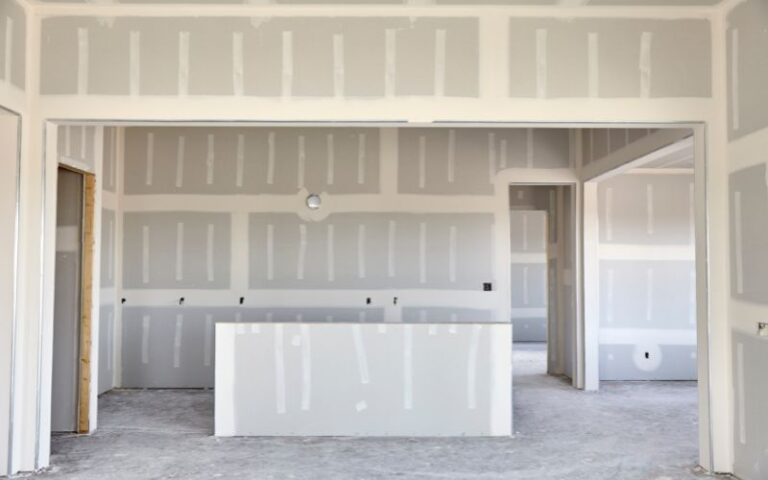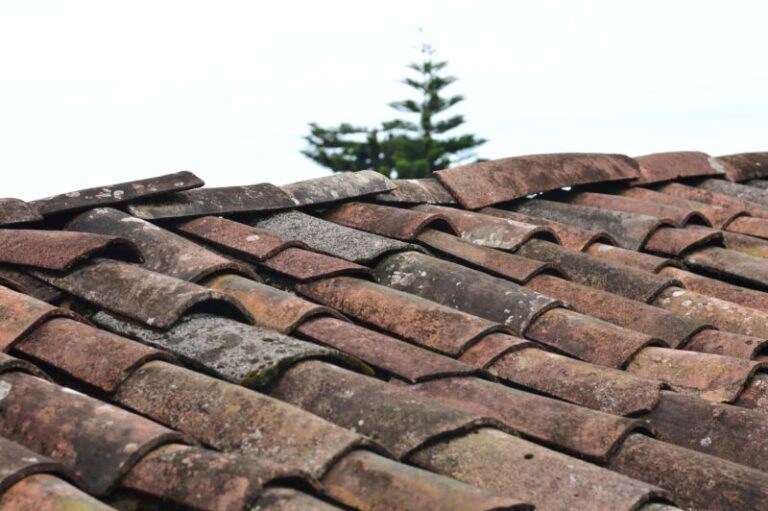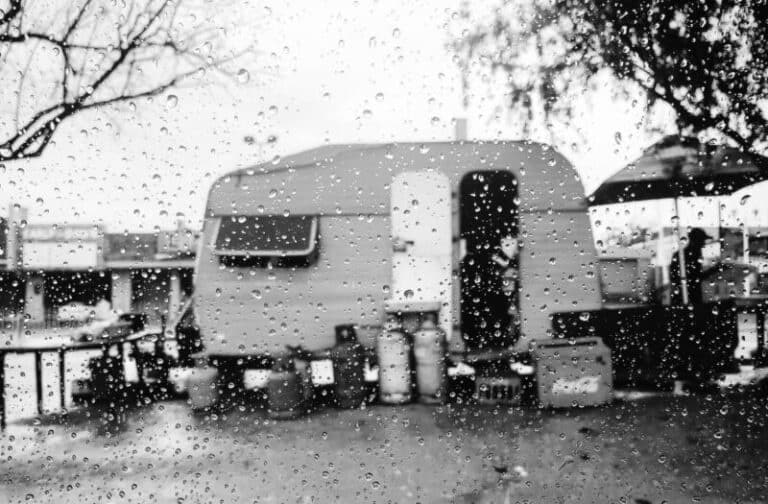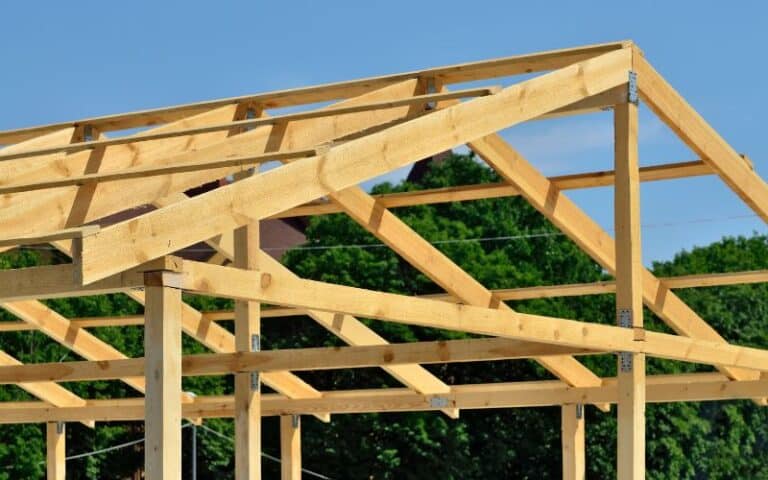Roofs made from Plywood or OSB go through issues like leaks and cracks. These leave homeowners disturbed about how to solve the issue.
But with the advent of roofing tar, keeping a roof healthy and protecting it from further leaks has been much easier.
Applying roofing tar to your roof will protect it from leaks and even strong wind. However, the question is, will roofing tar stick to concrete? Let’s get straight to that.
Roofing tar will stick to your concrete but won’t stay for long. I recommend using cement to ensure it doesn’t get caught on anything while the driveway sealer dries in less than an hour and is ready to drive on in a few hours. The asphalt roofing tar takes much longer to cure than the driveway sealer, which will dry in less than an hour.
Ready for a Roofing Quiz?
Can You Use Roofing Tar on Concrete?
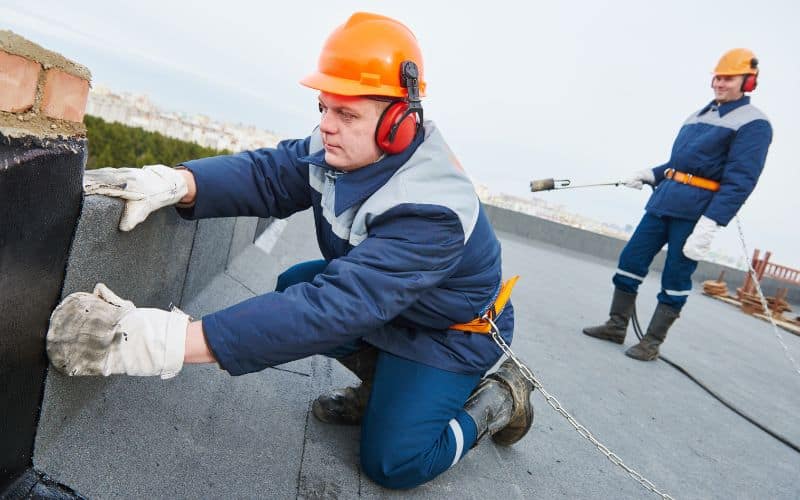
It could seem like a good plan at the moment to apply roofing tar to your concrete, but as time goes on, you will realize that this was the worst decision you could have made.
Roofing or plastic roof cement stays longer to dry on cement. If you must use it on concrete, it should be on walls or deckings, but not on walkways or driveways unless you want your tires covered with sticky roofing tar.
When the weather becomes hot, plastic roof cement or roofing tar becomes sticky on your concrete, and when you drive your car, the tires leave marks in the tar everywhere.
You’ll end up with shoes soaked in tar, which you’ll track into your house and find impossible to clean from the carpet or the floor; roofing tars solve roof leaks and cracks.
You should steer clear of applying roofing tar on your driveway; people go for this because it’s less expensive when compared to cement.
To save yourself the stress of scraping and cleaning, you should use cement to cover the holes and patches you see.
#1. How to Apply Tar to Concrete?
Patching major potholes with cold asphalt patches should be the first step in starting the process early in the warm season.
Cold asphalt sells in bags weighing either 40 or 50 pounds, and, as the name suggests, it does not need to heat in the same way that hot melt asphalt does.
Before adding driveway coating, most producers of cold patch asphalt recommend allowing at least 30 days for the asphalt to cure.
The cold asphalt patch should be applied at 2 inches and compacted to a thickness of 1 inch.
After that, give the surface of the asphalt patch a slight crown, then pound it down hard so the edges blend in with the driveway.
Like any other surface treatment, driveway sealer adheres most effectively when the surface underneath it is clean and dry.
A hose or pressure washer can give an asphalt driveway a comprehensive cleaning before it is applied.
The oily patches should be scrubbed with an appropriate degreasing detergent and then completely rinsed after cleaning.
When applying driveway coating, it can be challenging to maintain cleanliness. Put on some old clothes and shoes you won’t mind getting rid of once you’re through.
Alternatively, you may dress in painter’s disposable overalls and rubber boots that will easily wash.
Roofing Tar on Basement Concrete Floor
Many people are shocked when they discover that their basement has grown extremely damp despite the absence of any broken pipes or leaking equipment.
They are unaware that concrete is a porous material; hence, moisture can freely penetrate them.
Roofing tar is for damp proofing basement walls; tar is painted on the walls to prevent water vapor from passing through the walls both in and out.
However, tar made for roofing is not an effective material for waterproofing. Instead of providing a waterproof covering, treating your basement walls with tar will produce a damp-proof layer.
There are different types of waterproofing materials that can be applied in the form of sheets or sprayed on to perform the function of a membrane.
Polyurethane, asphalt, or rubber are the usual components of materials used to manufacture waterproofing compounds.
Let’s look at the advantages and disadvantages of applying roofing tar below: Pros and Cons of Using Roofing Tar:
| Pros | Cons |
|---|---|
| Roofing tar is useful for a roof because it resists Ultraviolet rays. | Tar isn’t healthy. It emits strong odors during application and cure. |
| Roofing tar protects a flat roof from wind, snow, and water. | Tar doesn’t allow concrete to circulate like penetrating coatings and stays on the surface. |
| Tar provides a thick, strong, waterproof covering that protects concrete walls for years. It’s cheap and safe when applied by professionals. | As a result, it has the potential to decay over time and will eventually need replacement. |
Roofing Tar Formulations and Its Types
Coal and byproducts of petroleum are the two main ingredients in its production. They obtain coal tar, a dark brown or black residue during coal manufacturing.
A dark and oily mixture, roofing tar is applied on flat roofs to repair leaks.
The sections of the roof that have been damaged or are progressively disintegrating can be sealed, bonded, or repaired with coal tar roof cement, a sort of roofing tar.
The application of coal tar roof cement is easy with a trowel, but the application of other types of roofing tars is more akin to painting or caulking.
Asbestos is absent in more recent formulations of roofing tar. However, these formulations may still contain polymers, solvents, surface adherents, and mineral fillers or fibers.
Most formulations for roofing tar are black; however, some producers have developed variants with lighter hues, such as silver and white.
It is possible to remove roofing tar by using a tar remover; however, tar removers have the potential to damage particular roofing surfaces.
Types of Roofing Tar
While you may be interested in this product, it’s also advisable to know that they are different types of roofing tar you can use to repair your roof.
Below are the types of roofing tar you’d see in the shop.
#1. Coal Tar Pitch
A pitch will be pop-out by heating coal tar, and upon melting, it emits a dark brown substance after dissolving at approximately 150°F. It helps construct roofs, roads, and drainage systems.
Roofing made with coal tar pitch is resistant to the elements, as well as chemicals and corrosion. Coal tar pitch roofs can endure 30 to 40 years if properly maintained.
Coal tar pitch roofs can last longer with additional preventative measures, such as keeping records of previous roof repairs and conducting roof audits (annually) to check for weather damage.
#2. Asphalt Roofing Tar
Asphalt roofing tar is for built-up, roll, and shingle roofing applications. Coated asphalt tiles (thick) or strips are among the options for asphalt shingles, in addition to hexagonal or rectangular shapes.
There are various rolled roofing products, such as soaked felt or tailored eave flashings, including all of the above.
#3. Coal Tar Bitumen
Coal tar bitumen is for steep roofs. It is in the business of producing roofing materials. To obtain coal tar bitumen, one must first obtain petroleum by extraction.
The equiviscous temperature (EVT) of Type III tar is higher than that of other roofing tars.
Slopes and hot temperatures are the only conditions suitable for coal tar bitumen roofing. The asphalt on “steep” slopes is hard to walk on.
Bitumen made from coal tar is less resistant to the elements and less long-lasting than bitumen made from the pitch. Bitumen refining is more time-consuming than pitching.
Also read: Why Do You Need a Plaster Weld?
Conclusions
This article discussed everything you may need to know about roofing tar.
Roofing tar would only produce better results on your roofing sheet; applying roofing tar on concrete or basement would hold for the main time but won’t last long.
Covering patches or holes on your wall is better to use cement than roofing tar.

